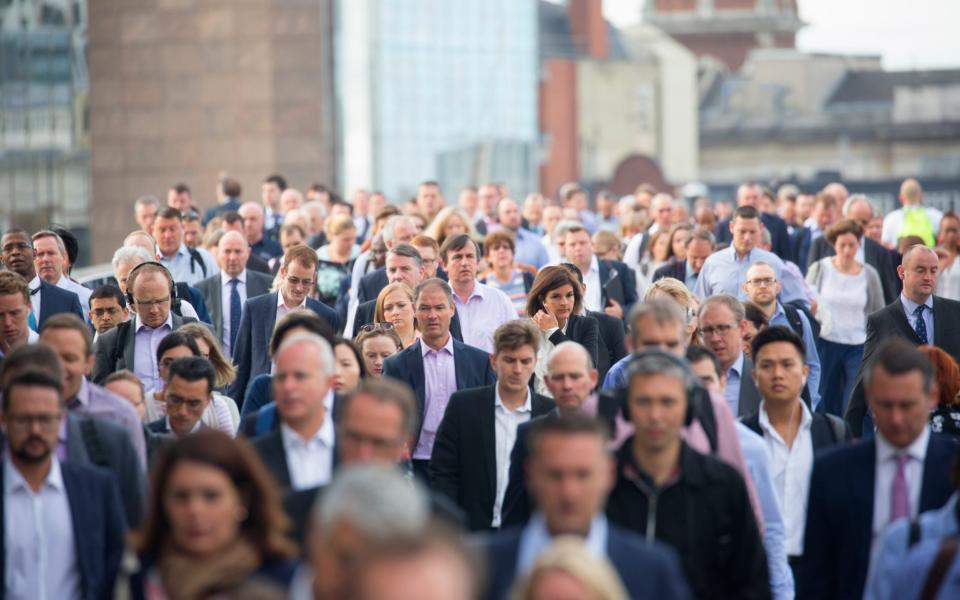Up to one million people wrongly classed as too sick to work

Up to a million people have been wrongly categorised as too sick to work when they are willing and able to get a job, according to new analysis.
The study by the Centre for Social Justice (CSJ) found that joblessness in Britain is nearly twice as high as official figures suggest, owing to a surge in so-called hidden unemployment.
The CSJ found at least 800,000 people who are out of work but want to get a job were missing from the headline unemployment rate in 2022 – many of them likely stuck on long-term sickness benefits.

Analysts said this figure could now have reached 1m amid a rise in the unemployment rate, which has climbed to 4.1pc from a low of 3.6pc two years ago.
Hidden unemployment refers to people who want a job and are capable of doing one, but who are not actively looking for work and are therefore not counted in the official unemployment rate.
Trushar Pandya, head of data and analysis at the CSJ, warned that “real unemployment is likely nearer 2.5m, not less than 1.5m of working age people”.
There were 1.4m people unemployed in the three months to July, according to the Office for National Statistics (ONS). This number covers everyone out of work and actively seeking employment.
Meanwhile 9.3m working-age people are classified as economically inactive – not in a job but not actively seeking employment either.
This group includes early retirees, stay at home parents, students and the long-term sick, with many on benefits even if they do not seek work.
The CSJ analysed survey responses from these economically inactive people, and concluded that up to 1m of them want to do a job and are therefore wrongly categorised.
Former Tory leader Sir Iain Duncan Smith said the Government must do more to get people back into work.
He said: “Too many people on sickness benefits are written off”, he said, adding that the current benefits system did not have the right incentives for people to even start looking.
The former work and pensions secretary added: “Just let them go to work, for God’s sake. Help them get into work, get better pay, and then they will come off benefits naturally.”
Mr Pandya said many people in this group of hidden unemployed lived in areas that had been left behind.
He said: “The problem is that a lot of these people live disproportionately in parts of the country that are deindustrialised areas.
“They’re in seaside towns, they’re in inner cities, as a consequence, while headline rates of unemployment suggest joblessness is quite low, these figures paint a very mixed picture across the country.”

It added that many forgotten seaside towns were now being used to house recently-arrived migrants, which was exacerbating the concentration of unemployed and inactive people in certain parts of the country.
In an upcoming report, the CSJ will say: “This means that they have become locations where local government and markets have tended to put recently arrived migrants and refugees as well as the unemployed owing to cost pressures; all of whom are vulnerable to becoming incapacitated.”
The think tank is urging the Government to continue to invest in programmes such as Universal Support, which offers tailored help for the long term sick and disabled.
Economic inactivity has surged since lockdown amid a rise in the number of people signed off work for mental health conditions such as anxiety and depression.
The number of working age people neither in work nor looking for a job owing to ill health currently stands at 2.8m people.
The report said the benefits to the taxpayer of getting people back to work are huge.
The Office for Budget Responsibility (OBR), the Government’s tax and spending watchdog, has calculated that every person on incapacity benefits who moves from welfare to work reduces pressure on taxpayers by £10,900.
One in 10 adults of working age are now on sickness benefits, according to the Institute for Fiscal Studies (IFS).
The number of people aged 16 to 64 claiming incapacity, disability benefits or both jumped from 2.8m before the pandemic to 3.9m now, with the surge driven by more claims by young people and a rapid rise in mental health-related claims among all ages.
Women also make up a rising share of disability claims.